
自由撰稿、活动策划、摄影。关注性别、亚文化、当代艺术、心理学与灵性等话题。 个人网站:www.siqi.love
Two Nights of Sleepwalking in an Abandoned Art Building
This article first appeared on "BIE Others", and the full version is republished here. Thanks to Rice for the edit!
1
When G told me that he couldn't live in the hotel, I was next to an "ancient tree" in the Jinhua Art and Architecture Park, or a "huge mushroom", which is not very important. Its real role is "tea pavilion". The official said in the introduction written at unknown time: " She created a new space, a small square, she belongs to the public, and provides a place for people to stay. It's like people gathering under a big tree in the countryside to talk.... She is an ancient tree and a modern structure—telling a very long social process about nature. " The word "she" is well used . I don’t know if it’s implicitly implying that one day women can gather freely and express their good wishes freely.
When I was taking pictures next to the "old tree", her "new space" function was activated like a voice-activated light. An aunt came over to persuade me, "Why are you shooting this? You should go to the river to take pictures! There are so many beautiful lights by the river (referring to some slender cylinders with randomly changing colors), and the big turntable opposite (referring to Ferris wheel).” She wore a beautiful dress with colorful, swirling stripes as psychedelic as the lights on a Ferris wheel. She asked me to guess how old she was. I thought about it, and usually only people over fifty would ask that question, so I said it was over forty. She shook her head and said, I am over seventy!

We chatted for a while, and when I wanted to end the conversation, I said, "I really like these buildings, I will continue to look at them!" She nodded and walked towards the bright river bank. I quickly took out my phone and replied to G, "Just now I was on social with my aunt."
G is another friend who came to Zhejiang to play, and I arrived a few days earlier than him. I decided to take a tour of the surrounding cities first, such as this "Architectural Art Park" in Jinhua. According to insufficient information, the park started construction in 2004. Among the 11 foreign architects at that time were Demeuron Herzog, the designer of the "Bird's Nest" scheme for the main stadium of the Beijing Olympic Games, and Professor Toshiko Mori, director of the Department of Architecture at Harvard University. Among the 6 Chinese architects and artists, there are 4 leading figures representing Chinese modern architectural forces, Ai Weiwei, Zhang Yonghe, Liu Jiakun, and Wang Shu. However, the buildings fell into ruins in 2010, two years after they were built. We came to see the ruins.
I agreed to meet G in Jinhua, but when he arrived, he asked three hotels and refused to let him stay, each with its own reasons. It was getting dark, he said, if it doesn't work, just find a 24h McDonald's. But I advised him that it is better to sleep in a park than to sleep in McDonald's, since buildings are built for people to use anyway. In this way, sleeping in the park seems to be the one we choose among all the bad options.
2
In fact, I have already found my hotel, but I still decided to join G's beggar gang to adapt to the life I may live in the future in advance. Seeing that it was still early, we decided that G was waiting for me outside, and I was responsible for putting his luggage back to my hotel and charging the power bank for a while.
Taking advantage of this time, I brushed my teeth, washed my face, took a shower, and used shampoo, conditioner, body wash, facial cleanser, essential oils, and creams. For the first time, I realized that the human body needs so many layers of protection. I also did a quick wash, thinking I'll be done in the morning. I seriously thought about whether to take melatonin or not, and finally decided that if I slept too soundly in the park, I would be arrested by the urban management, so I decided to forget it. I remind myself to try to look like I'm going nomad, not going to a middle-class camp. In order to prepare a few more thick clothes, I brought a large and dirt-resistant shoulder bag. I bought it when I was watching a contemporary art exhibition at the Royal College of Art. Since I accidentally spilled half a cup of coffee and threw it into the washing machine, it has changed from contemporary art, cultural and creative peripherals to Taobao old ones. Leftover luggage.
After some careful preparation, it was nearly midnight when we returned to the park. The lights on the riverside and the ferris wheel have been turned off, just as the lights of the train cars are also turned off in the middle of the night to let passengers rest. We are like in the initial stage of a game, groping forward without equipment and props.
Generally speaking, if you see some black geometric vacancies among some swaying tree shadows, it is probably where the art building is located. But there are exceptions. I saw some faint, blue-green light in the woods, coming through one of the windows facing the sky. The house full of green light looks like a huge remote control plugged into the ground. I glanced at the introduction, this art building is called: Toilet. The reason why the toilet has a skylight is to "while ensuring the privacy of the toilet, introduce the sky and the park landscape, avoid depression, and form a fusion with nature." Well, it is still too conservative. It is not only the sky and park landscape that can form a fusion with nature, but also the sewer.
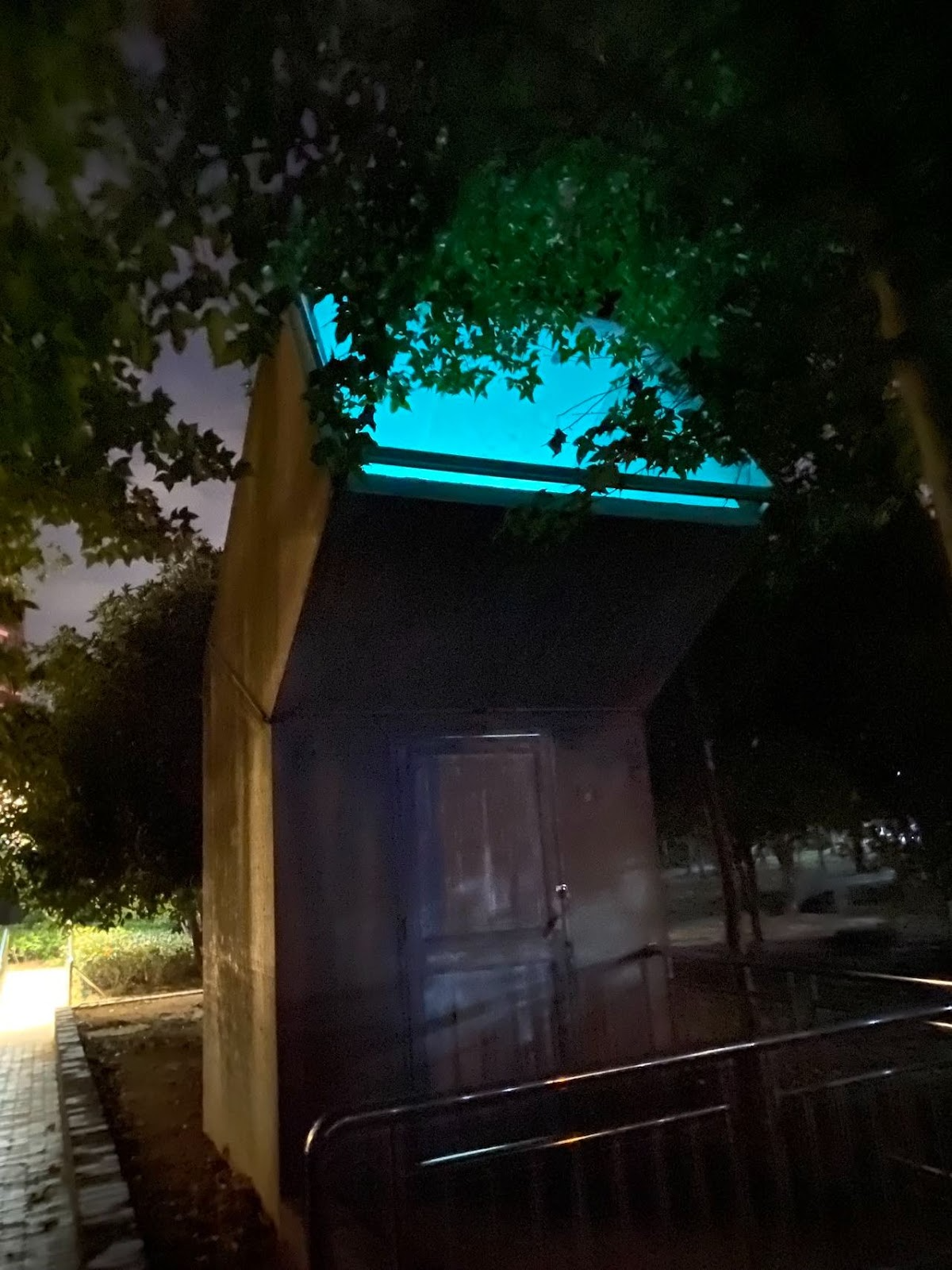
Also, in another place not far away, I saw a row of lights flickering in a completely random manner, extending towards the sky along a direction at an angle of 45 degrees to the ground. These lights are not illuminating, they are just blinking. After getting closer, I realized that it was a staircase, pointing to a cube in the air. This building is called "Tea Room". According to the official introduction, "The raised balcony can capture the river view and wild wind, and fulfill people's basic desire to rest and drink tea. The light volume of the small building corresponds to the heavy dam, like migratory birds. Fly over, flap your wings lightly."
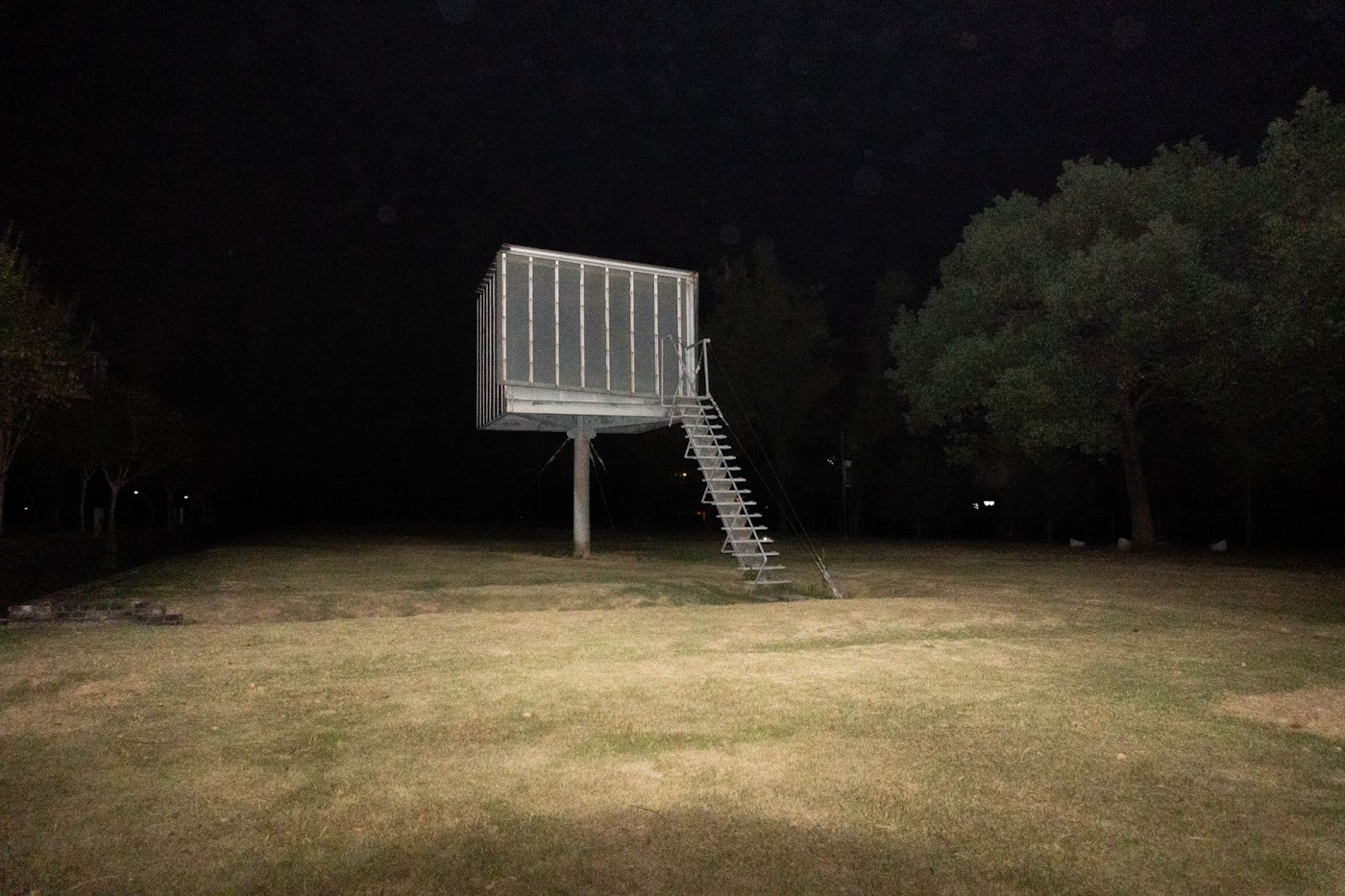
I walked up the steps one by one. The handrail on the left was a metal pipe with a diameter of about 5 cm, and the other side was a steel wire that could not be gripped at all. Not sure if it's the asymmetrical aesthetic or cutting corners. When I finally came to the end, I looked in from the crack of the wall of the building (if that thin layer of reflective material is considered a "wall"), the whole room was empty, but there was a round barrel in the middle. Is this room leaking? Then don't stop.
I wanted to lean on the handrail to see the night view of the city, but when I lowered my head, I realized that the handrail on the side of the pipe disappeared at the end of the steps, about 3 meters above the ground—it was only one step from the art scene to the accident scene remote.
Fortunately, another place called "Exhibition Hall" can also enjoy the night view. When the Ferris wheel on the other side of the river is still on, the rooftop of the exhibition hall is a good place to take wedding photos. Taking advantage of a cameraman yelling "Closer! Kiss!! Yes, keep kissing! Keep kissing!!", I secretly filmed that scene.

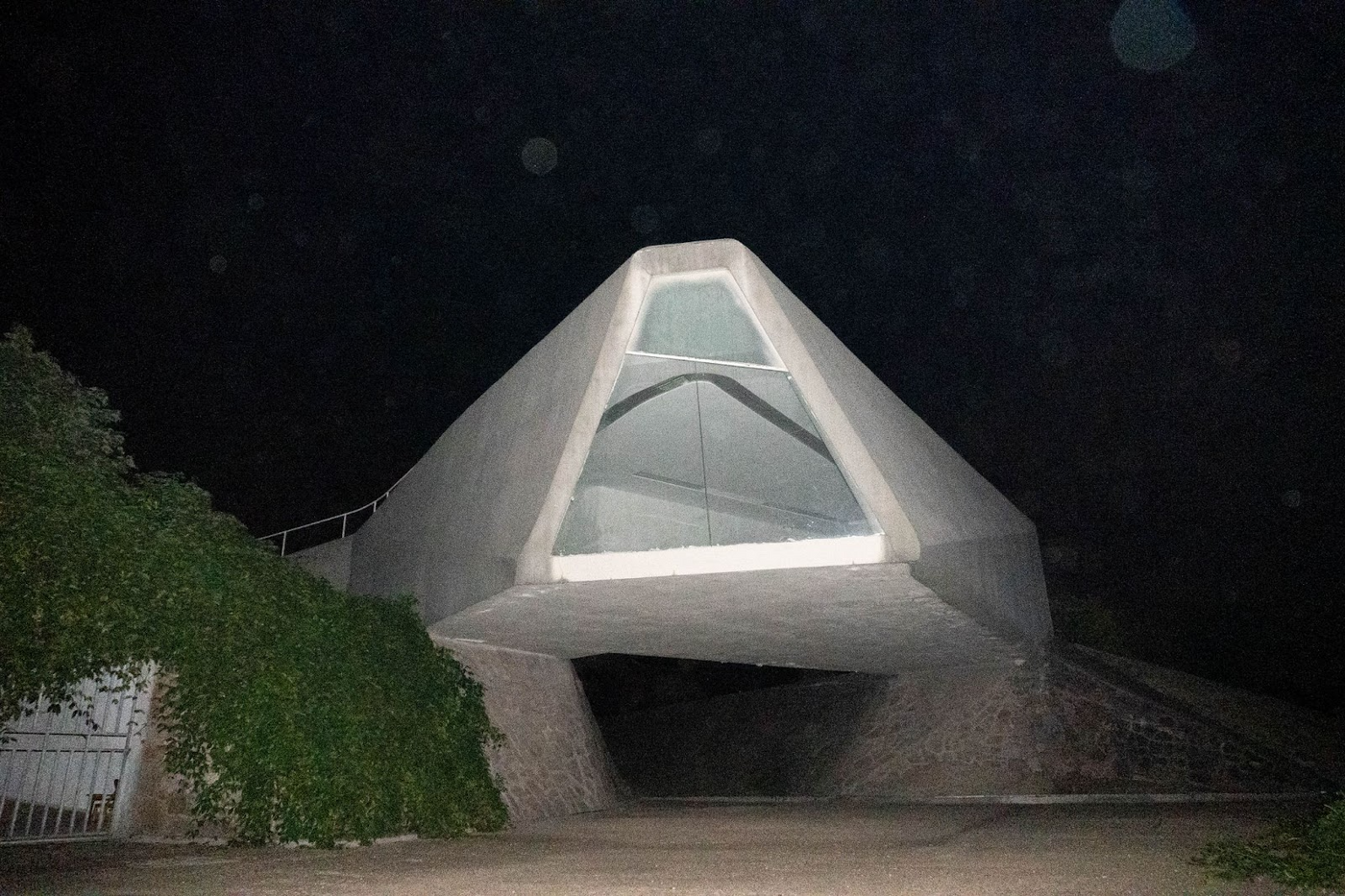
There is a sentence in the introduction of the "Exhibition Hall", "The external shape of the building forms an organic topographical relationship with the site landscape at the same time." The complex combination of depressions and protrusions is like slight ripples on the surface of a lake. The last time I saw such a terrain was in a war movie where soldiers dug trenches to avoid attacks. Contemporary trenches are disguised as artistic buildings, which can not only completely confuse the enemy from material to spiritual, but also provide materials for a new generation of scholars who study war, perfectly realizing the return from postmodernism to pragmatism.
I came to the lowest part of the trench, sat on the ground, and looked up at the exhibition hall against its slope. It's an interesting perspective. Looking from here (if I don’t have to use the flash so pretentiously), with the exhibition hall as the dividing line, the signboard of Sunshine Oasis Food Stall is at the bottom, and Algol and Mars in Perseus are at the top. Like the toilet, it subtly realizes the integration with nature. The other side of the showroom is covered by weeds, leaving only one entrance, with a few small chairs and brooms inside. Oddly enough, the park is not deserted these days, not even a tree branch falls on the walking path. But the weeds on this exhibition hall look untended, like a landscape that has been left on purpose.
But we are not just here to see the night view, but to sleep. Although the trench is hidden, its slope does not conform to the structure of the human body, so it is not suitable to stay for a long time. After a day of running around, G was already tired and didn't have the energy to walk around the whole park, so we chose the "Youth Hostel" for tonight as soon as possible - three small townhouses not far away.
They are all pink, with large roofs for shelter from the wind and rain, with small holes scattered in them. Called "Children's Play", or "Baby Dragon", it is a "snag-shaped concrete wall with multiple traversal experiences". The name "Baby Dragon" is really good, and the full name must be "Babies grow up to be descendants of dragons".
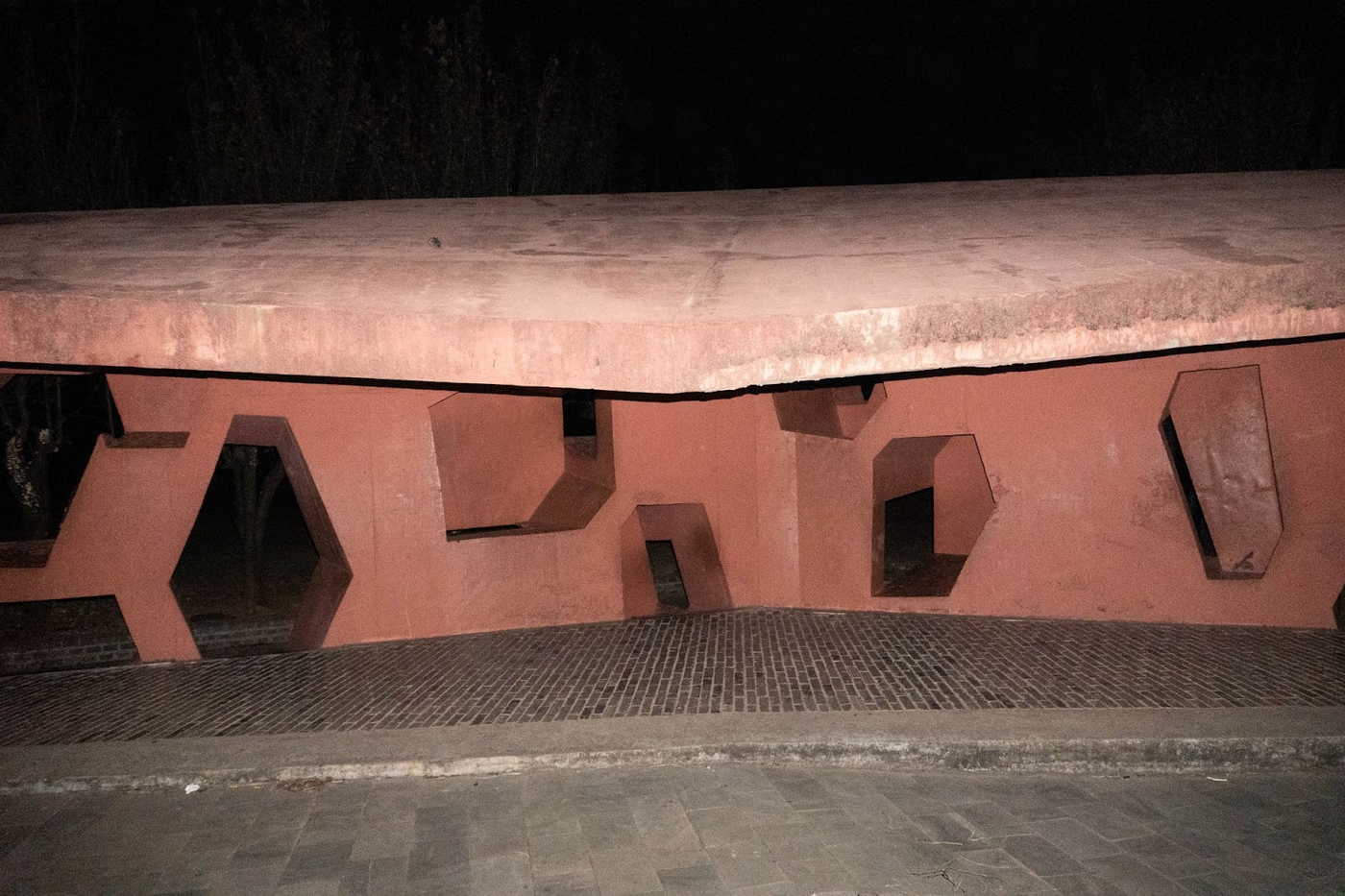
But when you measure it with a sleeping standard, you will find that its designers are really hostile. The holes are so evenly spaced that there are no two large rooms adjoining each other. Some rooms are very large, but the floor is a slope and cannot lie flat. Some floors are very flat, but there are no walls on the left and right sides, which lacks a sense of security. In short, each room has its unique flaws, just as every hotel G has asked has its own individual reasons for refusing to check in.
We started picking our favorite room and seriously trying to sleep. In order to adapt to the body that must constantly change positions, G moved through three rooms of shapes in five hours. What I chose was a large room on the ground floor. Its left side is completely open, facing the hostel lobby, and a small window is left on the right side, facing the short trees not far away. I found a blue cushion left in another room and used it as my bed. Then I took off the silk scarf that was usually tied on the bag and tied it on my head, while keeping out the wind a little bit, I also played the wolf grandma in the children's game.
Unfortunately, I can't sleep well without melatonin. At three o'clock, I saw a man with a large black backpack pass by. At four o'clock, an old man came to watch a short video not far away. At five o'clock, the number of people doing morning exercises gradually increased. My phone was dying and I got through the long sleepless nights by making up the life stories of these people in my head.
At half past five, G got up. He took a bum shower (tramp-style bath) in the real public toilet (newly built next to the abandoned art building toilet). The term, which he learned in America, refers to the kind of quick shower you take in a public toilet at a gas station.
Facing the sunrise by the river, breathing the first batch of oxygen emitted by plants in photosynthesis, our energetic day began again.
3
On the second night, we plan to finish visiting the other half of the Architecture and Art Park, so we still have to stay in Jinhua. This time we came earlier, and the people walking in the park hadn't left yet. I just discovered that there were lights next to these buildings during the period just after dark. Moreover, because the lights are too eye-catching, people even suspect that the building is the foil.
The first building we see today is called the "Ice Cream Kiosk". The introduction said, "The whole building is a long and narrow plane that can be folded in half." Well, I didn't understand it, but I was shocked. Then, "The north wall consists of framed display windows in which printed materials are pasted. The current day's newspaper is posted in its entirety so that passers-by can see it in its entirety. The wall is also an archive of recent past news, mainly On magazine covers and headlines."
Today, the colorful lights inside and outside here have indeed perfectly restored the part of its "ice cream" feature. But the Japanese designer probably doesn't know much about whether "pasting the wall with paper" is not an idea in China long ago, but the wisdom of folk decoration all the time. If you want to turn it into a creative idea, it will be impossible to get confused. Right?
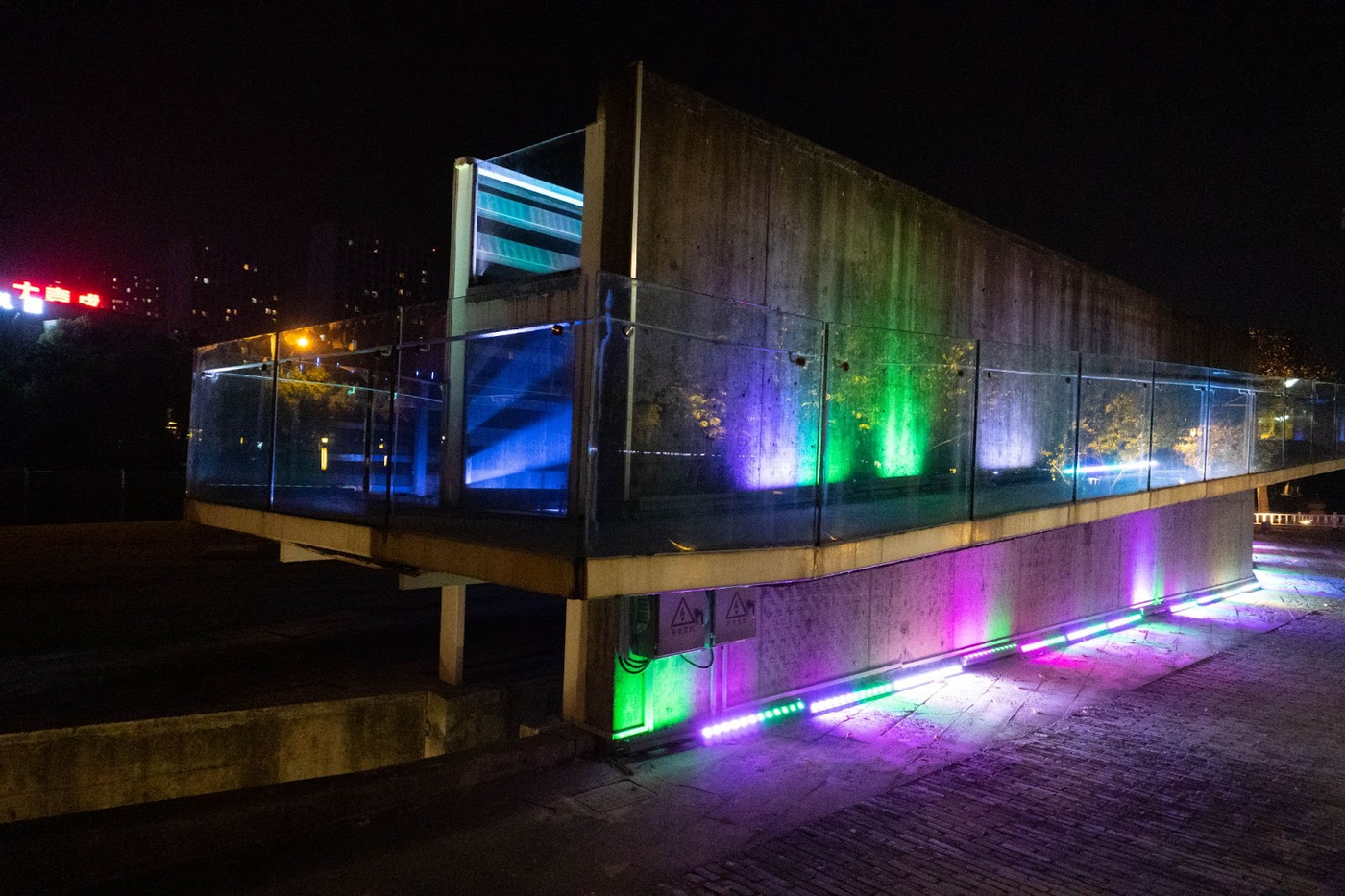
Going further, I saw several buildings that I liked very much, but none of them were suitable for staying overnight. For example, a "tea pavilion on the bridge". (How can there be so many places to drink tea?) Its introduction is, "Mexican architects combined the passage of the bridge and the passage of the tea room into a very interesting concept of 'tea pavilion on the bridge', and through the prestressed concrete folded plate structure The squeezing and twisting of the building create two levels of sunlight and shadow feeling. In the 'tea pavilion on the bridge', you can either stop or walk, or yin or yang."
I imagined waking up in the tea pavilion on this bridge and seeing the sunrise cut into different shapes...it's really perfect for absorbing the essence of heaven, earth, sun and moon. It's a pity that its gate is locked tightly, blocking my way of cultivating immortals.

There is also a "Zen Space", designed by Herzog & De Meuron. Their most famous works include the transformation of the huge London Riverside Power Station into the Tate Modern Art Gallery and the National Stadium for the 2008 Beijing Olympics. "Zen Space", "like other buildings scattered in the village, is a square on the plane, and forms a cube after three-dimensional. Each side of this cube is wrapped by the same traditional Chinese screen pattern, setting an invisible matrix on each building facade to define the shape and position of the open spaces."
G said, this is a bit like a child's game, but more ZXXX. I thought he meant it was more "zen" here. So I asked, "Would you like to meditate here?" But he corrected me that it was a little more "dirty". I get it, it's not a good place to live either.
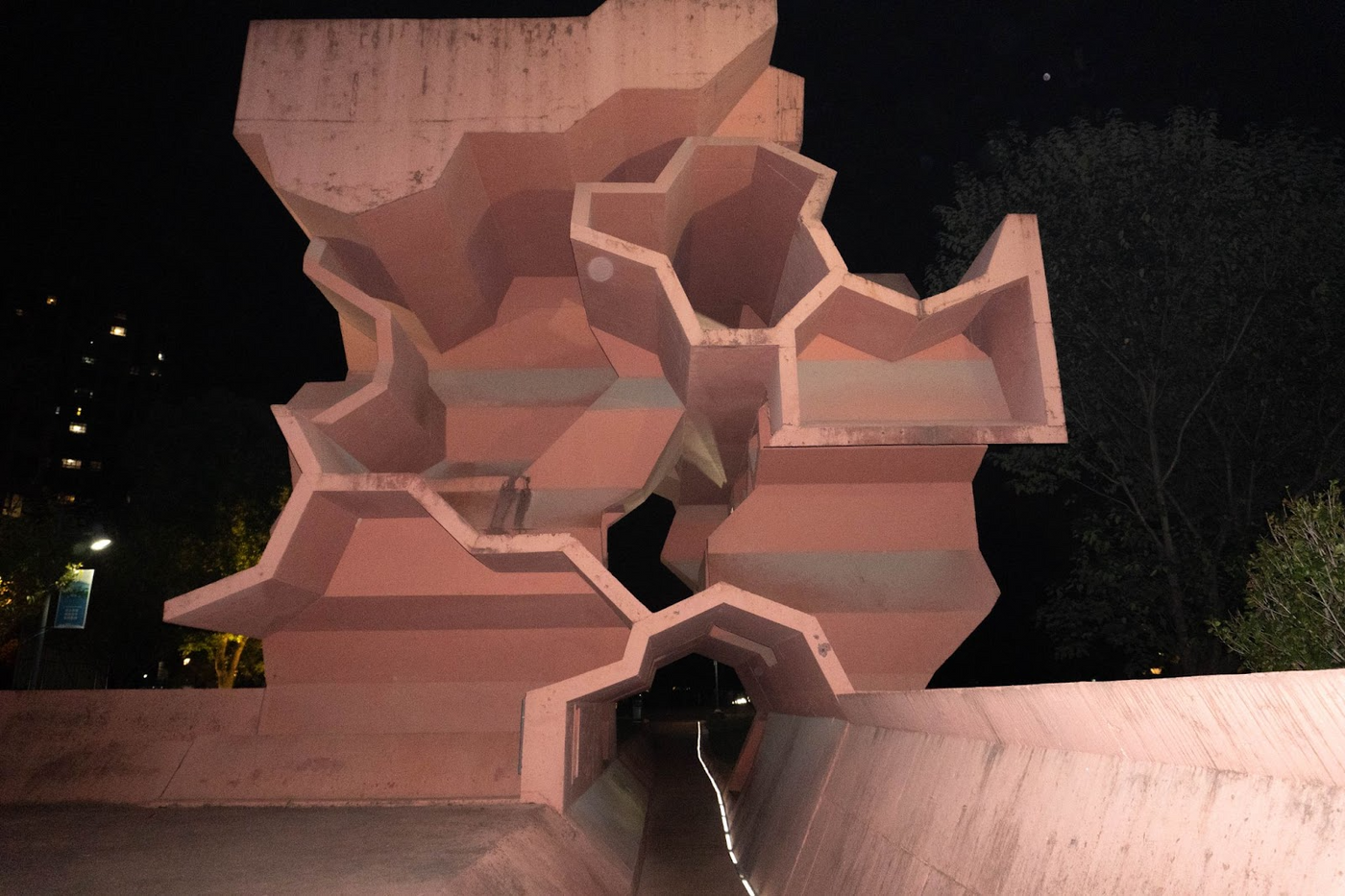
The first one that made us think of it as an alternative residence this evening was a large villa that looked like a sales center from a distance. I say it looks like a sales center because, in my limited knowledge, it seems that the sales centers are much more luxurious than the buildings they sell. Moreover, this building is so luxurious that it has a sense of "local" pride. Specifically, "the entire building is made of local materials, Jinhua local stone is used on the ground floor and outdoor parts, and local woodwork is used on the top floor. and steel."
In fact, this is a restaurant, with more than 20 dining tables and sunken seats, and an empty sun room on the second floor. Although the restaurant has long lost its function and two garbage trucks parked in, the meticulously manicured garden still maintains its last dignity.
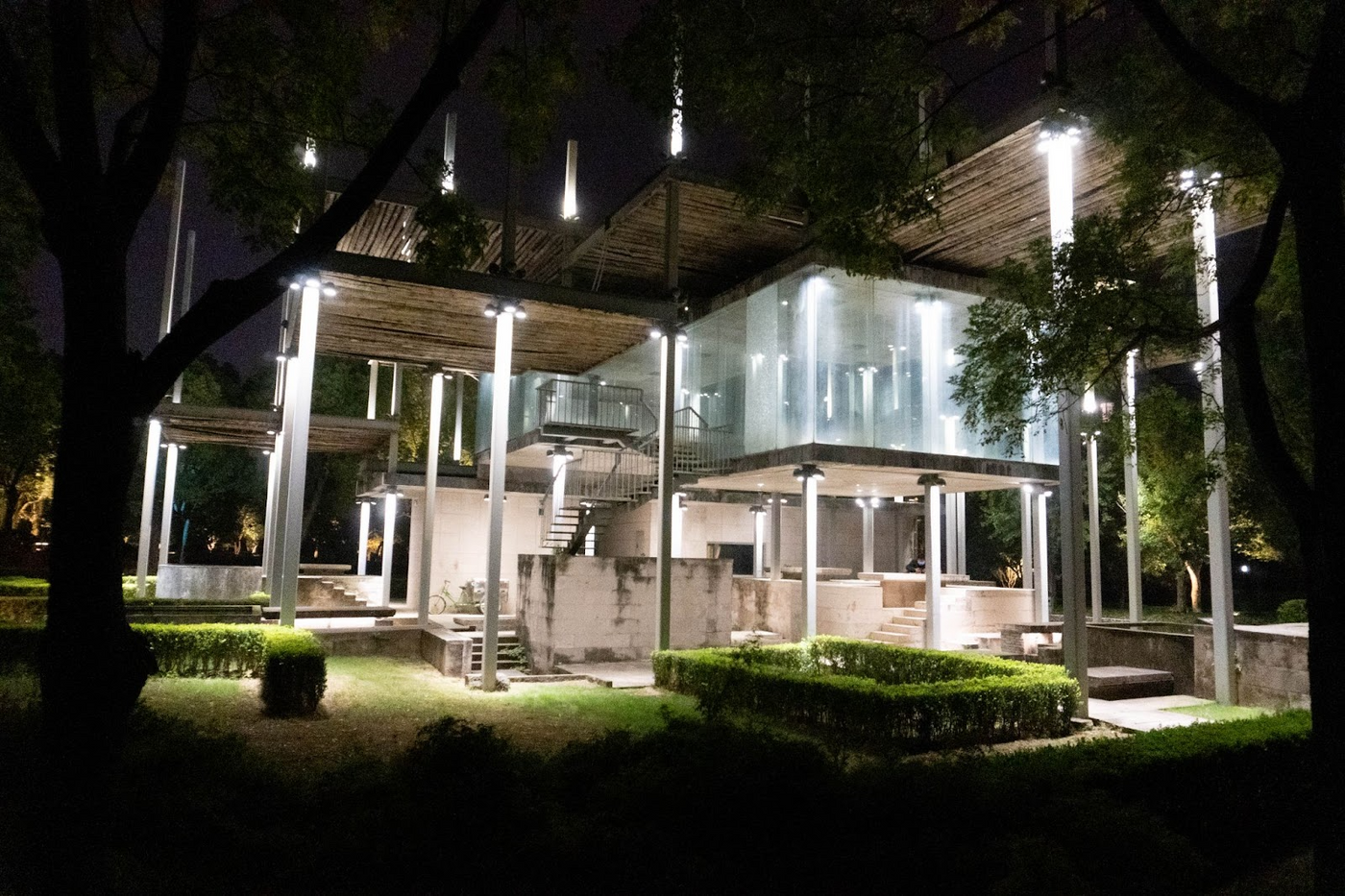
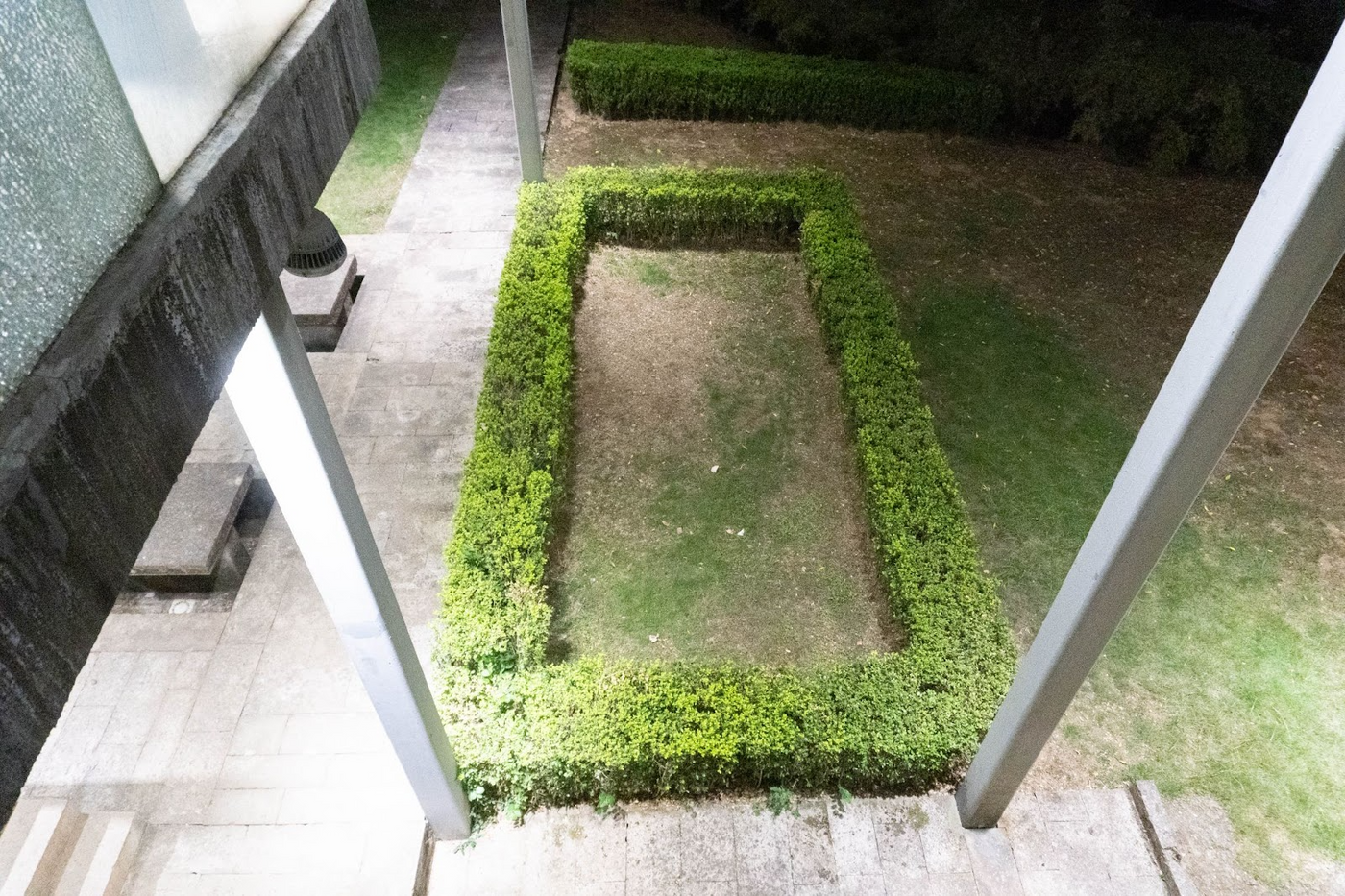
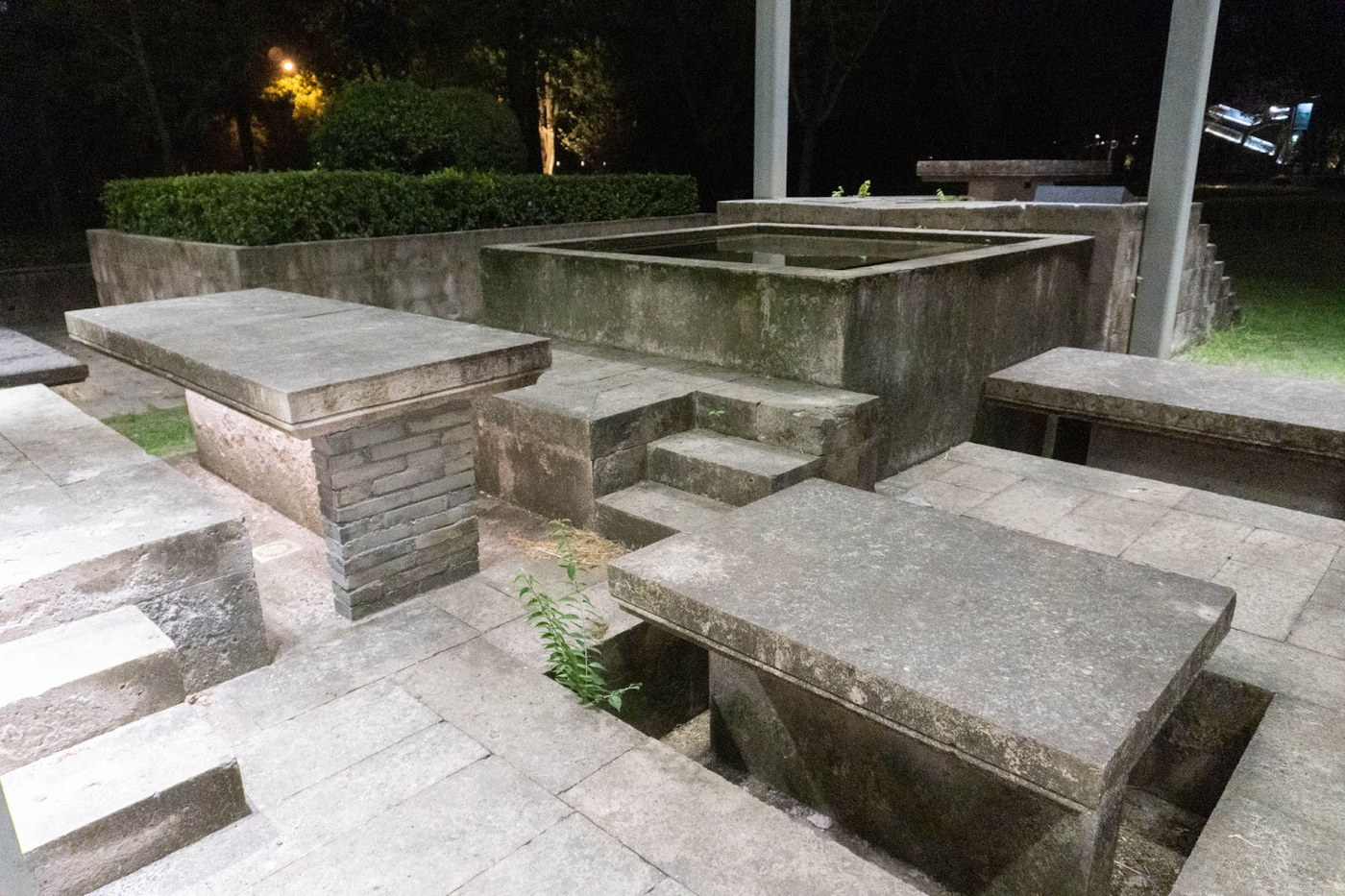
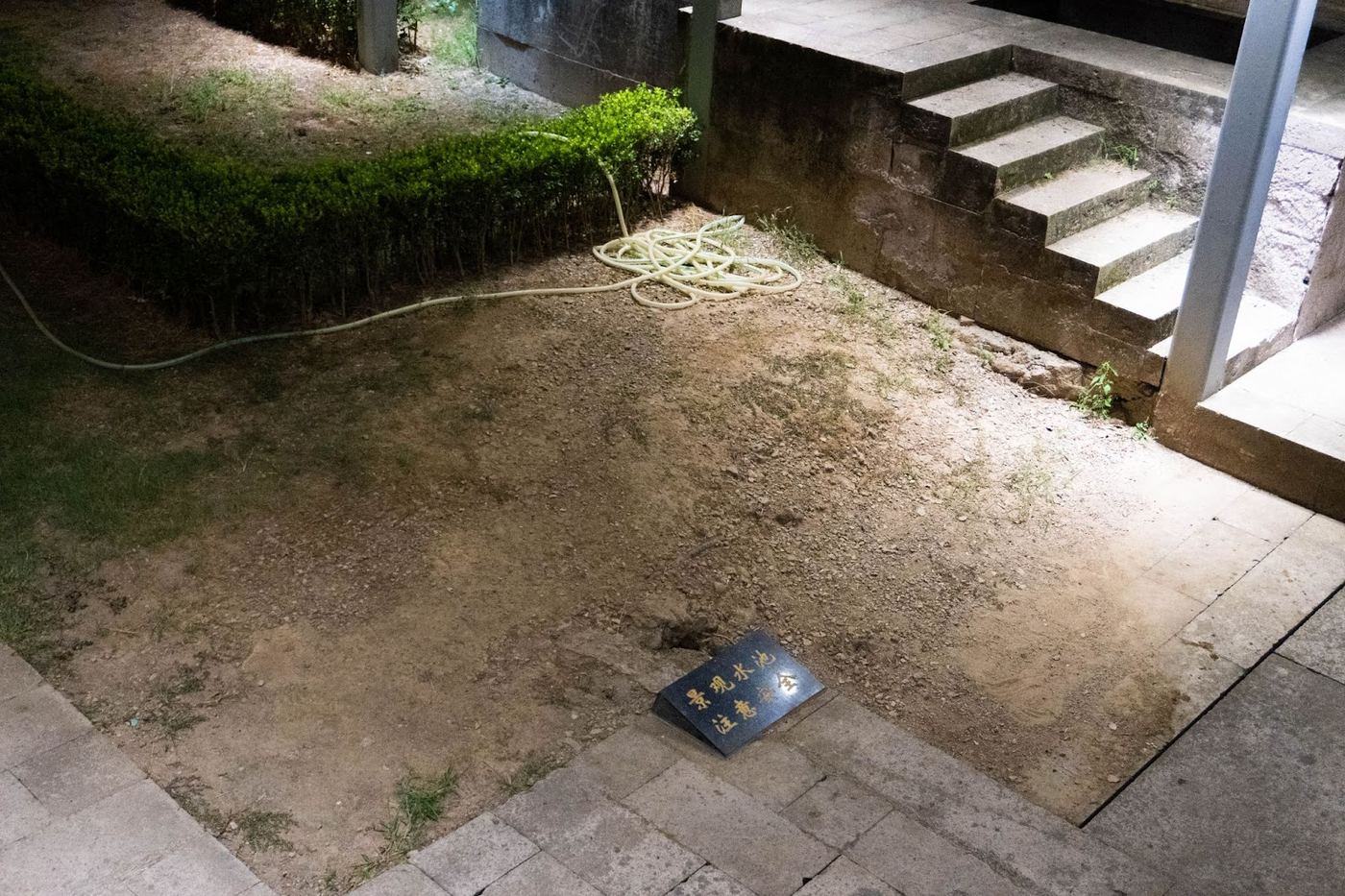
I really wanted to live in this "House of Dignity", but when we walked back here after the lights were turned off in the park, we found that two boys were still playing in the dimly lit basketball court opposite. Compared with the noise of playing ball, I'm actually more worried about... Maybe they plan to live here too? Then, in order to avoid being dispersed in the middle of the night due to crowd gathering, it is better to find another place.
Finally we crossed an empty lawn and saw a cluster of white buildings. Its original name was "Comprehensive Space", and its introduction mentioned, "The designer proposed the concept of 'snack' space... For everyone who walks in, he is experiencing a small experience, Maybe it's more like tasting a small 'snack' with different flavors, very small and light, but it may have already touched somewhere in your heart..."
The community structure of the comprehensive space provides a sense of security like a primitive tribe, and the autumn wind that zigzags through it also smudges the texture of night like an ink painting. On the periphery of the building, a row of red letters that elevate the status of the ruins stands above - "Architectural Art Park New Era Civilization Practice Station".
Practice of civilization in the new era! What a once in a lifetime opportunity. We decided to live here.

We chose a rest pavilion located in the center of the integrated space. The spacious and clean long strip seats on all sides of the pavilion are almost the width of a train sleeper. After eleven o'clock, G fell asleep as soon as he lay down. But it's a bit too early for me. To make the most of the homey feel in this space, I pulled out my computer and started organizing photos in my natural darkroom. Not far away, there are the sounds of passers-by chatting and passing by. It is very joyful. It must be because we are close to the civilization of the new era.
Later, G slept a little cold on the stone seat, and my otherwise useless liberal arts knowledge came in handy at this time. I said that when I wrote an article, I quoted a concept called "defensive architecture", which refers to some facilities that exist because of people's leisure needs in public areas, but are deliberately designed to prevent people from being too leisurely. Create barriers. One of the hostile structures is the seating made of stone, because the surface temperature of stone is low, which is not a good place for homeless people to rest. "Anyway, try switching to that wooden bench over there."
While I was sleeping, I developed a very "new age civilized" way to keep warm: I hung two masks over my ears and then put them on the top of my head (if you can imagine that action). If conditions permit, it will be better to switch to a fleece mask. In addition to a little pain in the ears, the mask is not easy to fall off and has a wide coverage. It is an essential material during the wandering process. It is recommended that all people who may lose their residence carry a few more with them. Under its protection, I rested much better than the night before. While half asleep and half awake, I learned a not-so-useful skill, which is to judge whether there is another mosquito in my ear from the pitch of the buzzing sound. I had a dream. I dreamed that the first mosquito that found me was also the leader of this group of mosquitoes. It was called ANATA, which had an A more than the domestic brand ANTA. I kind of slapped it to death. The next day, more than 20 mosquito packs appeared on my legs, biting through my pants.
4
I got to know about this park through an article titled "A Prosperity with No Stories to Tell Is a Park in Decline" , but in order not to let too many other people's stories affect my first impression of the park, after leaving Jinhua, I Just started reading carefully. In the process of trying to understand where and why these buildings came from, the author of the article found that the news reports of the year were like abandoned buildings, with only sporadic fragments left. I followed these fragments and looked back at the reports I could find one by one. It may be because of the two nights together that I feel like home in the park, and the key points I have drawn in it are also somewhat different from those of the original author.
The question I want to answer while watching is: What kind of era gave me a great opportunity to sleep in a park. This is of course a sub-question.
Answer: According to the data in 2004, the project was still highly valued by the government at that time. As the government decision-maker, the district chief mentioned in an interview that since there are still architects who want to participate, then "simply bring greenery to Yiwu The upper reaches of the river have been extended", so that more designers can participate, "this platform will become a truly international platform". "I am happy for anyone to come in the future," the district chief said at the time.
But in August 2010, "Qianjiang Evening News" published a report titled " Jinhua Architectural Park was closed two years after it was completed, and famous designers suffered tragically ". The reporter learned, "The reason why the doors of these buildings are closed is that people like homeless people will cause more damage to the buildings after entering."
When big cities gradually annexed this area , a report in 2012 mentioned that the "cafe" designed by Wang Shu had been turned into the office of a real estate company because the "cafe" was facing a certain property The company's real estate projects. A staff member of the office told the reporter of the article: "We also consider giving the owner a good impression. Our real estate is so good, but it is so broken when we go out."
Now these buildings have been built, ranging from old-fashioned residential areas with five or six floors to villa areas surrounded by layers of plants. As the environment of the park became better, the real estate company also moved out from here, and the office became a ruin again.
To sum up, the best time gave me the best opportunity, and I should be secretly happy.
When comparing with other people's records, I also found some other funny things. I thought I had seen all the buildings, but when I went back and compared them, I found that the one designed by Ai Weiwei was the only one I didn't find. Did it disappear into the dark? I have carefully read Ai Weiwei's design concept several times: "From the east, west, and south sides, the museum is an ordinary building with a sloping roof. It is unique. People will have interesting spatial experience from outdoor to indoor, from entrance to exit.” Then I thought about the time I spent waiting in the nucleic acid queue for a long time, and then I suddenly realized that I seemed to see a building like The house like a country log house seems to touch those surfaces, which seem to be wood, but which seem to be not. But I left without taking pictures, because among a large number of art buildings, suddenly seeing a not-so-art building would give me a sense of horror. I suspect it is a plainclothes building among art buildings.
Also, not far from a pedestrian bridge connecting Jinhua Architectural Art Park and Ai Qing Memorial Park, we saw a white circular corridor. G said, "Like the style of ancient Greece!" I looked, and although the park is full of lawns, there is a specially fenced and elevated rectangular lawn on the south side of the circular corridor. The fenced grass is no more lush than the grass outside, and even less vigorous because of more trampling. So it is specially fenced...maybe it is to emphasize that these are local grasses of Jinhua?
Since the area of this building is quite large, I was too lazy to look for its introduction, so I decided to find the map of the park and the information on the Internet to see the answer. I suggest that you don't follow me, because the ending will be very funny-I found that this is not the work of any master, it is not one of the 17 "art buildings" at all.
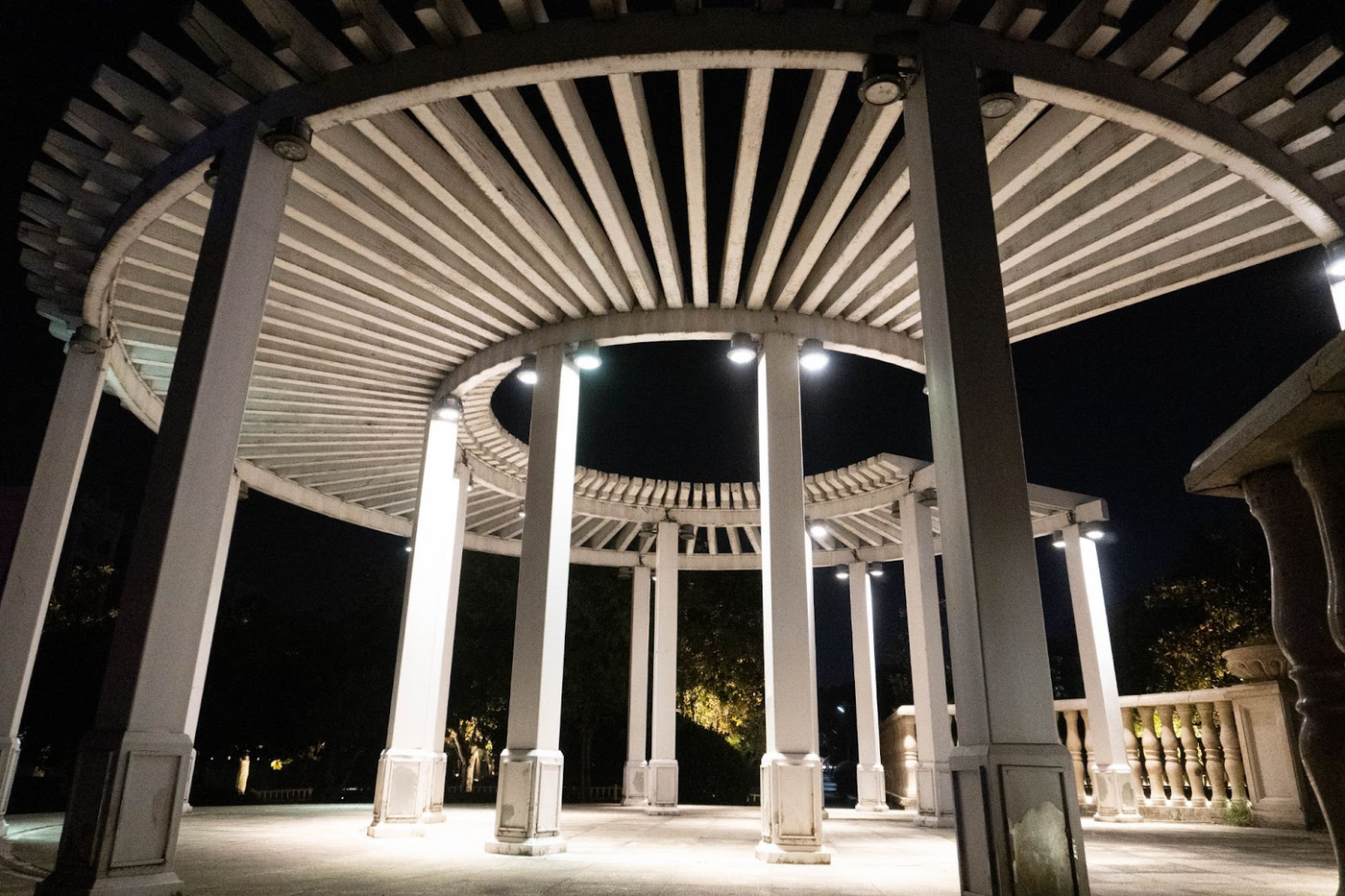
But I firmly don't think there is a problem with my understanding of art, but that the concept of contemporary art needs to be broadened. In my opinion, there is no such thing as "over-interpretation" in art. The audience should train themselves to comprehend "I know what you want to write when you take a blank piece of paper to the street". Under the guidance of this spirit, you will find more exquisite art in the park.
For example, steps, this is a work that exists only because of the interaction of the viewer. On the walkway close to every art building, you need to take three steps underground, three steps up, three steps, three steps and three steps with a sense of ritual. Your field of vision will not change in any way, but you will actually participate in an action. Just like every rule in society, the screening and optimization of all citizens is completed through the most imperceptible moments in life. When the viewer steps into the first step, there will inevitably be a thought in his heart: "Is this design not welcoming the disabled?" Of course not! On the contrary, these arts reversely reflect the concern for the disabled by arousing the reflection of the able-bodied people.
The iron fence around the park is also the least noticeable but most indispensable art building. From a distance, it is a plane; from a close view, it becomes a curved surface extended from a single plane according to precise scientific calculations; from a distance, it turns back to a plane compressed from a curved surface. The fluidity of this building is not only reflected in the relationship with the viewer, but also in its space occupation: it can stretch for thousands of miles like the Great Wall, or point to the sky like a monument. But its most attractive feature is that it brings together a variety of seemingly contradictory opposites, such as safety and danger, peace and turmoil, history and future, which embodies a kind of "you in you and you in me". The way of yin and yang. What's more worth mentioning is that it is strategically located on the outermost periphery of the park, so it will not be missed by any visitor. There's no particular order or angle of viewing, and you'll find it both in and out of the park—it's not really all that different.
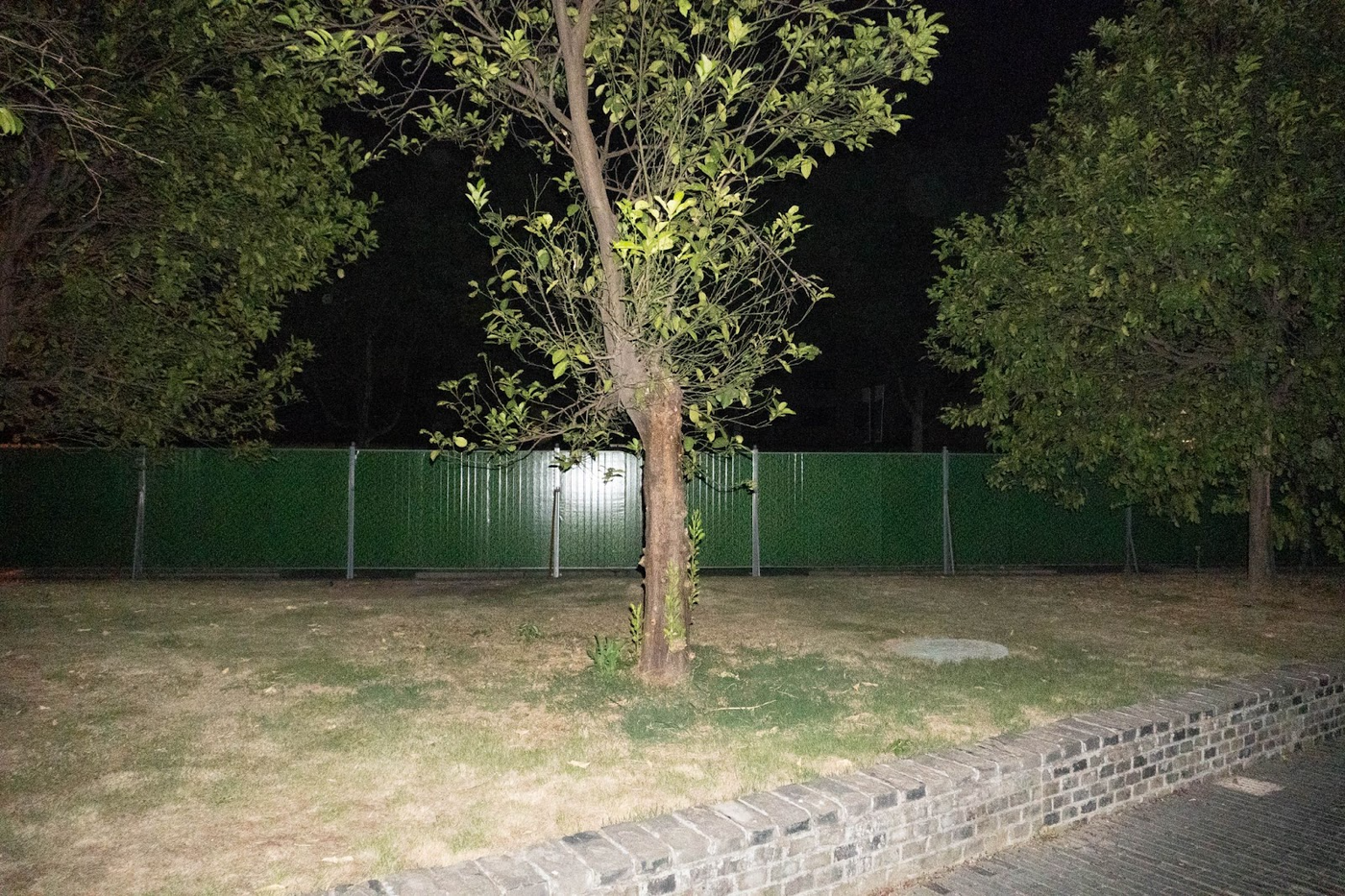
5
At dawn, we left the Art and Architecture Park and Jinhua. In a few days, National Day will come. By then, will this park become the home of more people?
If so, I have one important thing to remind future residents:
There is a fitness trail by the river, and it is very comfortable to walk on it with only socks and no shoes. It will definitely make your feet feel fresh, which is better than a real massage.
Don't forget to experience. Because it's free. It's free.
Like my work?
Don't forget to support or like, so I know you are with me..
Comment…